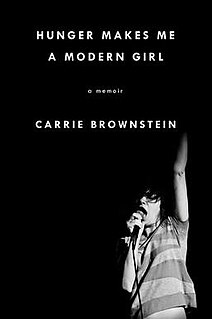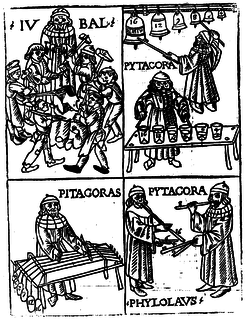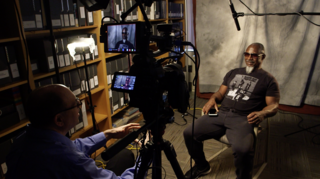 W
WThe history of music covers the historical development and presence of music from prehistoric times to present day. Though definitions of music vary wildly throughout the world, every known culture partakes in it, and music is thus considered a cultural universal. The origins of music remain highly contentious; commentators often relate it to the origin of language, with much disagreement surrounding whether music arose before, after or simultaneously with language. Many other theories exist, having been proposed by scholars from a wide range of disciplines, though none have achieved wide approval. Most cultures have their own mythical origins concerning the invention of music, generally rooted in their respective mythological, religious or philosophical beliefs.
 W
WKnowledge of the biblical period is mostly from literary references in the Bible and post-biblical sources. Religion and music historian Herbert Lockyer, Jr. writes that "music, both vocal and instrumental, was well cultivated among the Hebrews, the New Testament Christians, and the Christian church through the centuries." He adds that "a look at the Old Testament reveals how God's ancient people were devoted to the study and practice of music, which holds a unique place in the historical and prophetic books, as well as the Psalter."
 W
WClassical music is a term that most commonly refers to the formal musical tradition of the Western world, considered to be distinct from Western folk music or popular music traditions. In a more general sense, the term may also refer to music evidencing similar formal qualities in non-Western cultures. Originated in Western Europe during the Middle Ages, it is classified into eras: the Medieval (500–1400), Renaissance (1400–1600), Baroque (1600–1750), Classical (1750–1820), Romantic (1800–1910), Modernist (1890–1975) and Postmodern/Contemporary (1950–present) eras. These periods and their dates are all approximate generalizations and represent gradual stylistic shifts that varied in intensity and prominence throughout the Western world.
 W
WDJing is the act of playing existing recorded music for a live audience.
 W
WHunger Makes Me a Modern Girl is a 2015 memoir by Carrie Brownstein, a member of the band Sleater-Kinney. Named for one of her lyrics, is about her life in and around music. The book starts with her as a hyper-performative young nerd who runs for vice president of her Washington State elementary school. The story goes on to cover Brownstein's escape from a turbulent family life into a world where music was the means toward self-invention, community, and rescue. Along the way, Brownstein chronicles the excitement and contradictions within the era’s flourishing and fiercely independent music subculture, including experiences that sowed the seeds for the observational satire of the popular television series Portlandia years later.
 W
WThe Hurrian songs are a collection of music inscribed in cuneiform on clay tablets excavated from the ancient Amorite-Canaanite city of Ugarit, a headland in northern Syria, which date to approximately 1400 BCE. One of these tablets, which is nearly complete, contains the Hurrian Hymn to Nikkal, making it the oldest surviving substantially complete work of notated music in the world. While the composers' names of some of the fragmentary pieces are known, h.6 is an anonymous work.
 W
WThe Museo internazionale e biblioteca della musica is a music museum and music library in the Palazzo Aldini Sanguinetti, in the historic center of Bologna, Italy.
 W
WThe MacCrimmons were a Scottish family, pipers to the chiefs of Clan MacLeod for several generations. The MacCrimmon kindred was centred at Borreraig near the Clan MacLeod seat at Dunvegan on the Isle of Skye. At Borreraig the MacCrimmons conducted one of the best known "piping colleges" in the Highlands of Scotland.
 W
WMultitrack recording of sound is the process in which sound and other electro-acoustic signals are captured on a recording medium such as magnetic tape, which is divided into two or more audio tracks that run parallel with each other. Because they are carried on the same medium, the tracks stay in perfect synchronisation, while allowing multiple sound sources to be recorded at different times.
 W
WMusic archaeology is an interdisciplinary study field that combines musicology and archaeology. As it includes music from numerous cultures, it is often seen as being a part of ethnomusicology, and indeed a study group looking into music archaeology first emerged from ethnomusicological group the ICTM, not from within archaeology.
 W
WMusic technology is the study or the use of any device, mechanism, machine or tool by a musician or composer to make or perform music; to compose, notate, play back or record songs or pieces; or to analyze or edit music.
 W
WElectric music technology refers to musical instruments and recording devices that use electrical circuits, which are often combined with mechanical technologies. Examples of electric musical instruments include the electro-mechanical electric piano, the electric guitar, the electro-mechanical Hammond organ and the electric bass. All of these electric instruments do not produce a sound that is audible by the performer or audience in a performance setting unless they are connected to instrument amplifiers and loudspeaker cabinets, which made them sound loud enough for performers and the audience to hear. Amplifiers and loudspeakers are separate from the instrument in the case of the electric guitar, electric bass and some electric organs and most electric pianos. Some electric organs and electric pianos include the amplifier and speaker cabinet within the main housing for the instrument.
 W
WDigital music technology encompasses digital instruments, computers, electronic effects units, software, or digital audio equipment by a performer, composer, sound engineer, DJ, or record producer to produce, perform or record music. The term refers to electronic devices, instruments, computer hardware, and software used in performance, playback, recording, composition, mixing, analysis, and editing of music.
 W
WMechanical music technology is the use of any device, mechanism, machine or tool by a musician or composer to make or perform music; to compose, notate, play back or record songs or pieces; or to analyze or edit music. The earliest known applications of technology to music was prehistoric peoples' use of a tool to hand-drill holes in bones to make simple flutes. Ancient Egyptians developed stringed instruments, such as harps, lyres and lutes, which required making thin strings and some type of peg system for adjusting the pitch of the strings. Ancient Egyptians also used wind instruments such as double clarinets and percussion instruments such as cymbals. In Ancient Greece, instruments included the double-reed aulos and the lyre. Numerous instruments are referred to in the Bible, including the horn, pipe, lyre, harp, and bagpipe. During Biblical times, the cornet, flute, horn, organ, pipe, and trumpet were also used. During the Middle Ages, hand-written music notation was developed to write down the notes of religious Plainchant melodies; this notation enabled the Catholic church to disseminate the same chant melodies across its entire empire.
 W
WMusic theory is the study of the practices and possibilities of music. The Oxford Companion to Music describes three interrelated uses of the term "music theory". The first is the "rudiments", that are needed to understand music notation ; the second is learning scholars' views on music from antiquity to the present; the third is a sub-topic of musicology that "seeks to define processes and general principles in music". The musicological approach to theory differs from music analysis "in that it takes as its starting-point not the individual work or performance but the fundamental materials from which it is built."
 W
WThe NAMM Oral History Program is a collection of one-on-one interviews with people involved in the music products industry, including music instrument retailers, instrument and product creators, suppliers and sales representatives, music educators and advocates, publishers, live sound and recording pioneers, innovators, founders, and artists. The mission of the program is to preserve the history of the music products industry, including industry innovations, the evolution of musical instruments and music retail, as well as improving music education worldwide. The Oral History Program was established by the National Association of Music Merchants (NAMM) in 2000.
 W
WNoise: The Political Economy of Music is a book by French economist and scholar Jacques Attali concerning the role of music in the political economy.
 W
WA Partimento is a sketch, written out on a single staff, whose main purpose is to be a guide for the improvisation ("realization") of a composition at the keyboard. Partimento differs from simple basso continuo accompaniment in that the result is a complete, fully-realized composition. Partimenti were central to the training of European court musicians from the late 1600s until the early 1800s. They had their greatest influence first in Italian conservatories, especially at the music conservatories of Naples, and then later at the Paris Conservatory, which emulated the Neapolitan conservatories.
 W
WThe Penguin Guide to Blues Recordings is an encyclopedia of blues music albums released on CD.
 W
WMusic publishing is the business of creating, producing and distributing printed musical scores, parts, and books in various types of music notation, while ensuring that the composer, songwriter and other creators receive credit and royalties or other payment. This article outlines the early history of the industry.
 W
WThe Rap Year Book: The Most Important Rap Song From Every Year Since 1979, Discussed, Debated, and Deconstructed is a 2015 New York Times best-selling book written by Shea Serrano and illustrated by Arturo Torres.
 W
WRealization is the art of creating music, typically an accompaniment, from a figured bass, whether by improvisation in real time, or as a detained exercise in writing. It is most commonly associated with Baroque music.
 W
WSaint Thomas Christian music refers to the musical traditions of the Saint Thomas Christian community of Kerala, India. It is chiefly liturgical and is derived from ancient Syriac Christian music from the Middle East, with remarkably little influence from local Indian styles. Of particular significance is the prevalence of the organum singing style. As a result of the community's isolation and conservatism, these traditions may retain elements of the earliest forms of Early Christian music.
 W
WIn music, a sketch is an informal document prepared by a composer to assist in the process of composition.
 W
WTemperance songs are those musical compositions that were sung and performed to promote the Temperance Movement from the 1840s to the 1920s. It was a distinct genre of American music. In 1830 the US per capita consumption of alcohol was 9.5 gallons yearly, almost four times the rate of consumption in 2008. In response, many temperance organizations formed over the next eighty years. Some temperance song lyrics were sung with already well-known songs of the period, for example, "Oh! Susanna". This Stephen Foster melody was used with lyrics in support of temperance and the title changed to “There's A Good Time Coming,” in 1857, ten years after the publication of the original lyrics of "Oh! Susanna".
 W
WThe Vietnam War Song Project (VWSP) is an archive and interpretive examination of over 5000 Vietnam War songs identified. The project is currently hosted on the online collaborative database Rate Your Music, with components on YouTube, Twitter, and at the University of Maryland. It was founded in 2007 by its current editor, Dr. Justin Brummer, a historian with a PhD in contemporary Anglo-American relations. The project analyses the lyrics, and collects data on the genre, location, ethnicity, nationality, language, and time period of the recordings. It also involves the preservation of the original physical vinyl records. Additional items collected include cassette tapes, CDs, MP3s, record label scans, and sheet music.
 W
WWomen have made significant contributions to Latin music, a genre which predates Italian explorer Christopher Columbus' arrival in Latin America in 1492 and the Spanish colonization of the Americas. The earliest musicians were Native Americans, hundreds of ethnic groups across the continent, whose lyrics "reflect conflict, beauty, pain, and loss that mark all human experience." Indigenous communities reserved music for women, who were given equal opportunities with men to teach, perform, sing, and dance. Ethnomusicologists have measured ceramic, animal-bone, and cane flutes from the Inca Empire which indicate a preference for women with a high vocal range. Women had equal social status, were trained, and received the same opportunities in music as men in indigenous communities until the arrival of Columbus in the late 15th century. European settlers brought patriarchal, machismo ideologies to the continent, replacing the idea of equality between men and women. They equated native music with "savagery" and European music with "civilization". Female musicians tended to be darker-skinned as a result of the slave trade, and contemporary society denigrated music as a profession. Latin music became Africanized, with syncopated rhythms and call-and-response; European settlement introduced harmony and the Spanish décima song form.
 W
WWomen in music include women as composers, songwriters, instrumental performers, singers, conductors, music scholars, music educators, music critics/music journalists and in other musical professions. As well, it describes music movements, events and genres related to women, women's issues and feminism.